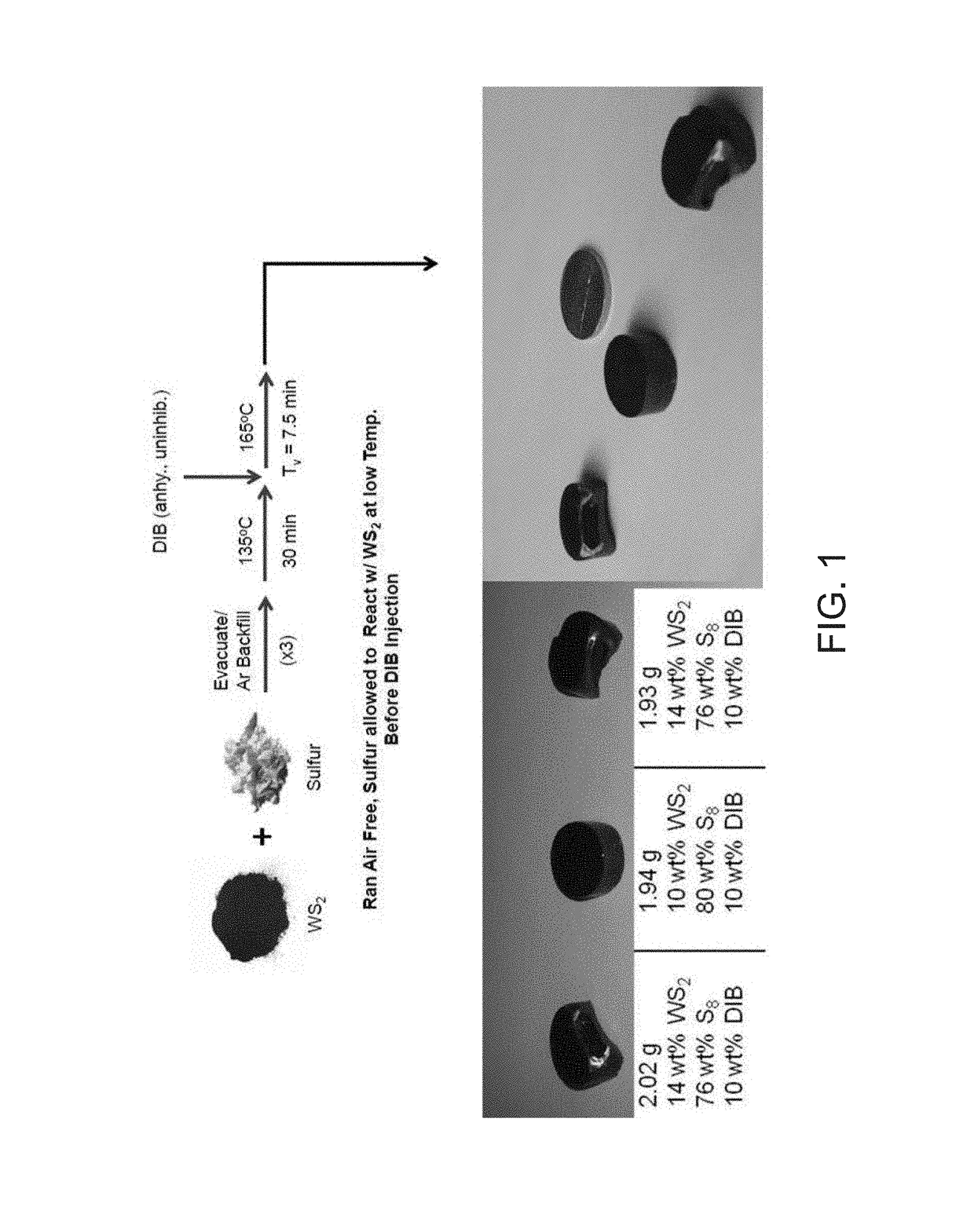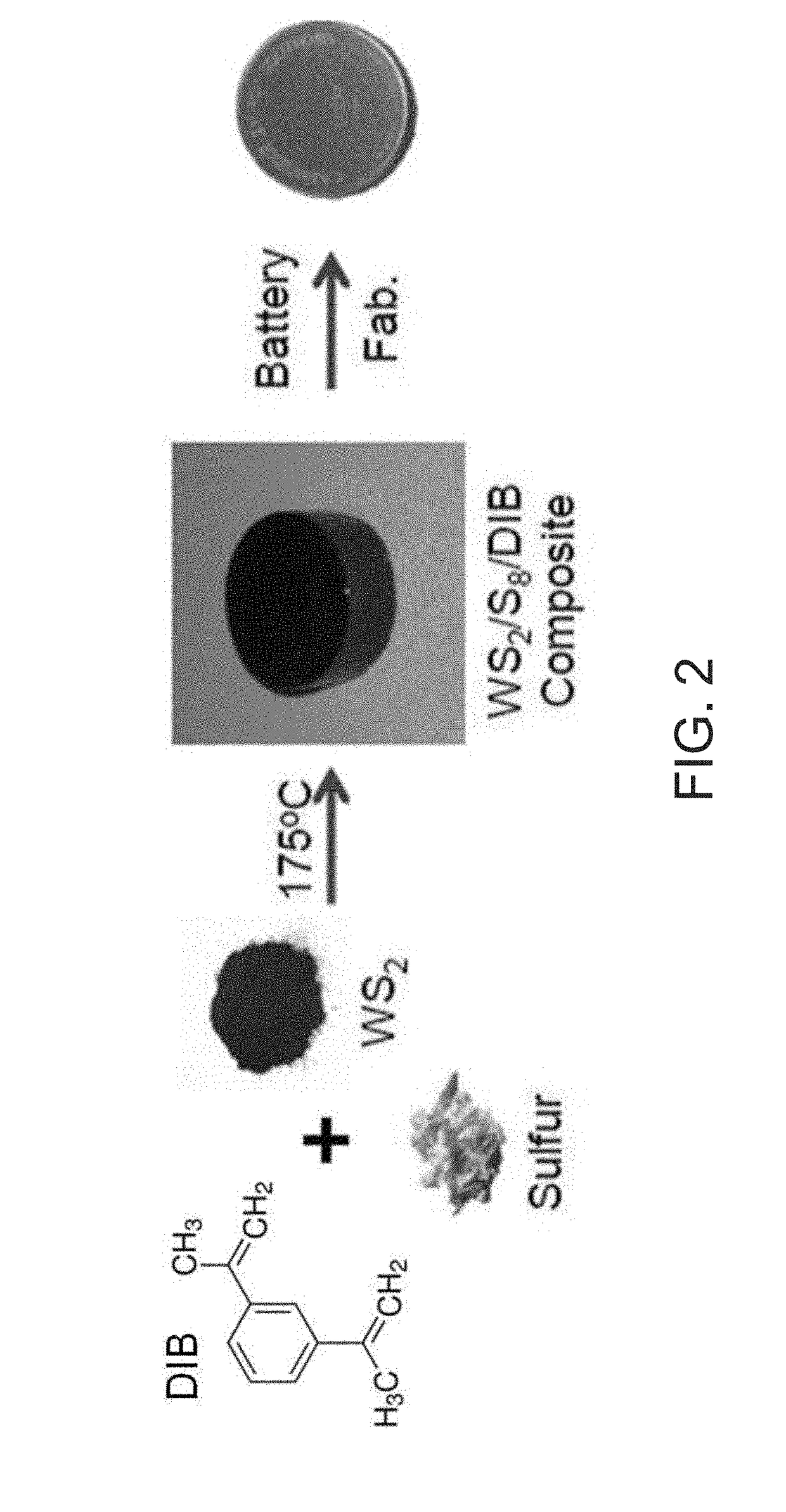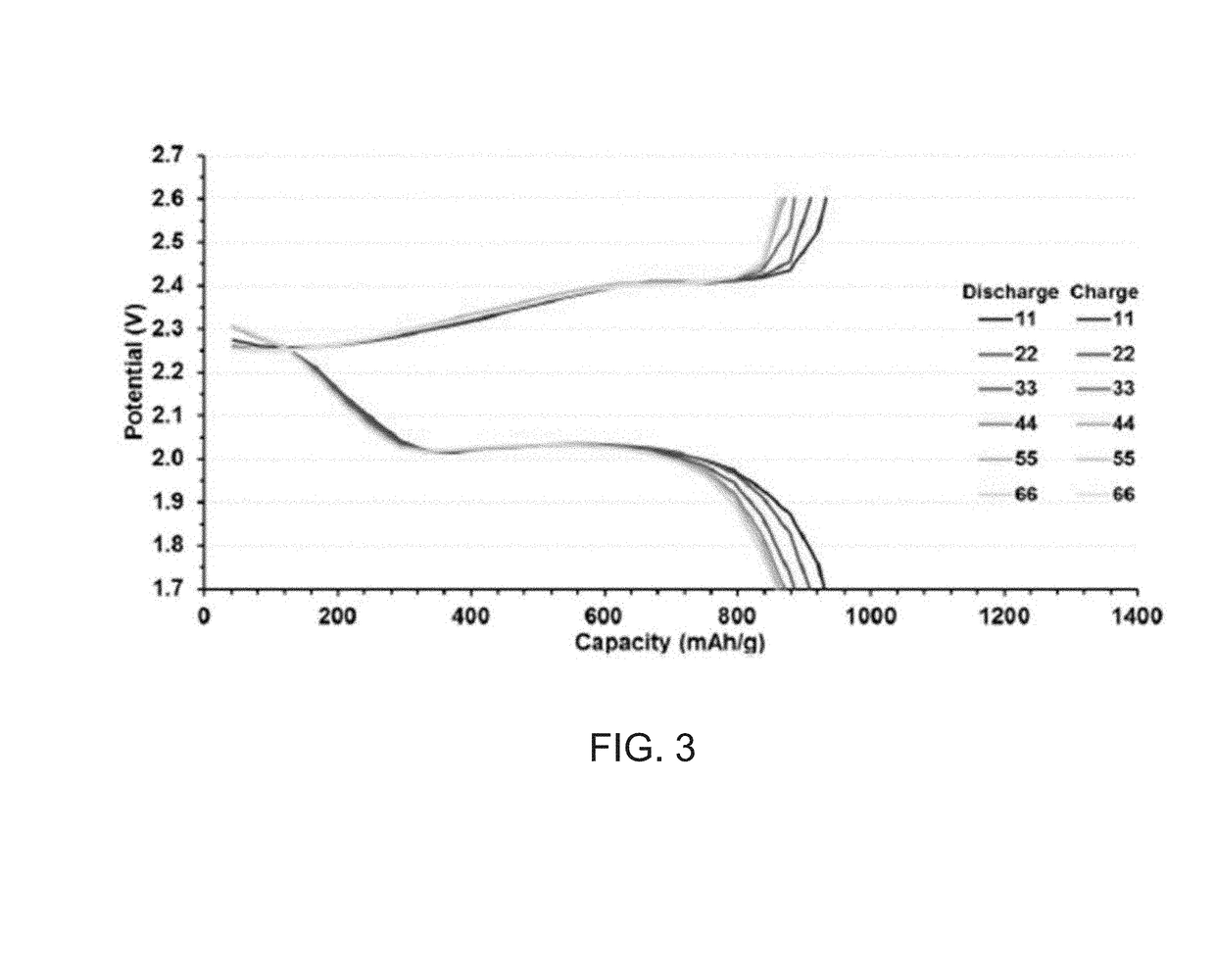CATHODE MATERIALS FOR Li-S BATTERIES
a cathode material and battery technology, applied in cell components, biocide, transportation and packaging, etc., can solve the problems of poor solid state mechanical properties, difficult processing of sulfur, limited number of synthetic methods available to utilize and modify elemental sulfur, etc., to improve li-s battery performance, and good li-ion transporting properties
- Summary
- Abstract
- Description
- Claims
- Application Information
AI Technical Summary
Benefits of technology
Problems solved by technology
Method used
Image
Examples
example 1
Synthesis of 10 wt % Tungsten Sulfide (WS2) / 10 wt % 1,3-Diisopropenylbenzene (DIB) / 80 wt % Sulfur (S8) Battery Material (2 g Scale)
[0048]Referring to FIG. 1, a composite was prepared utilizing a 4 dram glass vial equipped with a ½″ Teflon coated stirbar. To the vessel was added elemental sulfur (1.600 g, 4.99×10−2 mol) followed by tungsten sulfide powder (0.200 g, 8.07×10−4 mol). The vial was sealed with a rubber septum and evacuated for 5 minutes, followed by backfilling with argon. This procedure was repeated twice for a total of three vacuum / backfill cycles, in order to remove any adventitious moisture from the system and to prevent high temperature oxidation of tungsten sulfide. Subsequently, the contents of the vial were homogenized via vortex mixing to result in a light grey powder, before being mixed at 135° C. for 2 minutes at 100 RPM, then at 750 RPM for 18 minutes once the sulfur has melted. DIB (0.200 g, 0.216 mL, 1.26×10−3 mol) was added to the resulting homogeneous blac...
example 2
Synthesis of 50 wt % WS2 / 50 wt % Sulfur Battery Material (2 g Scale)
[0049]A composite was prepared utilizing a 4 dram glass vial equipped with a ½″ Teflon coated stirbar. To the vessel was added elemental sulfur (1.000 g, 3.12×10−2 mol) followed by tungsten sulfide powder (1.000 g, 4.03×10−3 mol). The vial was sealed with a rubber septum and evacuated for 5 minutes, followed by backfilling with argon. This procedure was repeated twice for a total of three vacuum / backfill cycles, in order to remove any adventitious moisture from the system and to prevent high temperature oxidation of tungsten sulfide. Subsequently, the contents of the vial were homogenized via vortex mixing to result in a dark grey powder, before being mixed at 135° C. for 20 minutes at 750 RPM. Stirring at high rate was found to be necessary in order to result in a homogeneous composite. The vial was then transferred to an oil bath thermostated at 165° C., where the black dispersion was allowed to heat with rapid st...
example 3
General Synthesis of WS2 / Sulfur Battery Materials (2 g Scale)
[0050]A variety of WS2 / S8 battery materials were found to be accessible following the procedure utilized for the 50 / 50 wt % composite material, ranging from 10 / 90 wt % WS2 / S8, 20 / 80 wt % WS2 / S8, 30 / 70 wt % WS2 / S8, and 40 / 60 wt % WS2 / S8. For each of these samples, thick black inks were observed after 15 minutes of reaction. Decreasing wt % of WS2 in the composite was observed to track with increased vitrification time, with 40 / 60 wt % WS2 / S8 samples vitrifying at 20 minutes, whereas 30 / 70 wt % WS2 / S8 samples vitrified at 1 hour time points to form characteristic black, homogeneous, brittle solids. Interestingly, vitrification was not observed for 20 / 80 wt % WS2 / S8 samples and 10 / 90 wt % WS2 / S8 samples after 1 hour of reaction time, but solidification to form black, homogeneous, brittle solids were observed for each after removing from the oil bath and allowing to cool naturally to room temperature.
PUM
| Property | Measurement | Unit |
|---|---|---|
| temperature | aaaaa | aaaaa |
| charge capacity | aaaaa | aaaaa |
| charge capacity | aaaaa | aaaaa |
Abstract
Description
Claims
Application Information
 Login to View More
Login to View More - R&D
- Intellectual Property
- Life Sciences
- Materials
- Tech Scout
- Unparalleled Data Quality
- Higher Quality Content
- 60% Fewer Hallucinations
Browse by: Latest US Patents, China's latest patents, Technical Efficacy Thesaurus, Application Domain, Technology Topic, Popular Technical Reports.
© 2025 PatSnap. All rights reserved.Legal|Privacy policy|Modern Slavery Act Transparency Statement|Sitemap|About US| Contact US: help@patsnap.com



